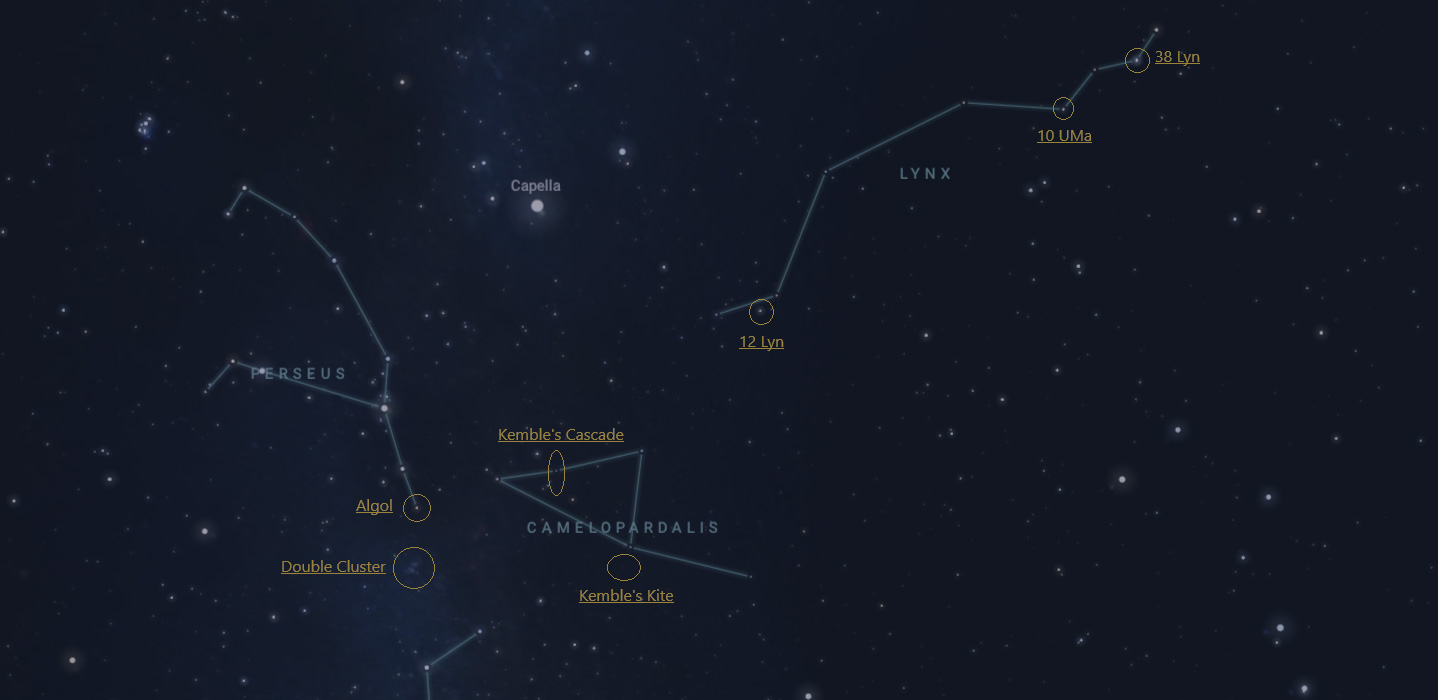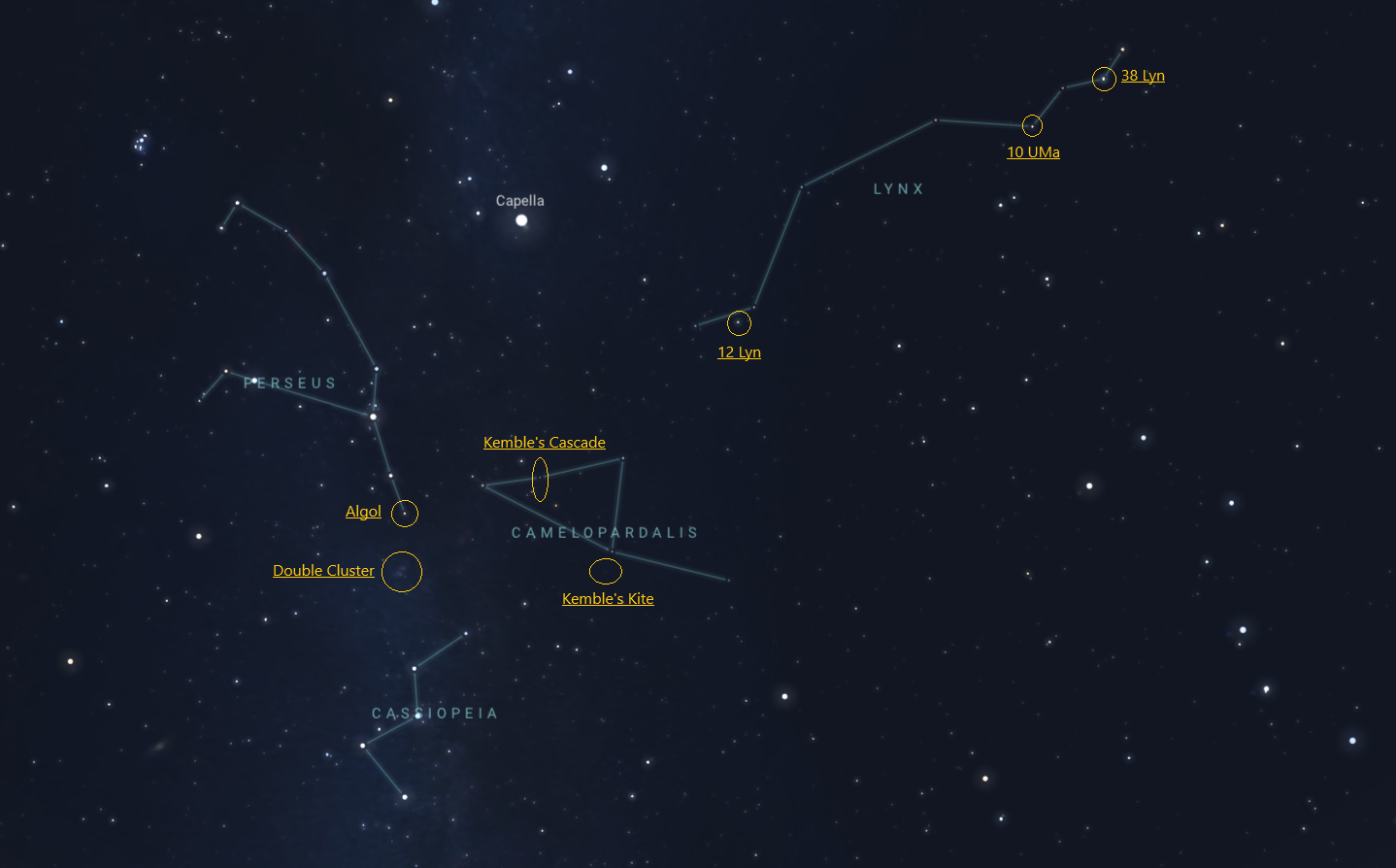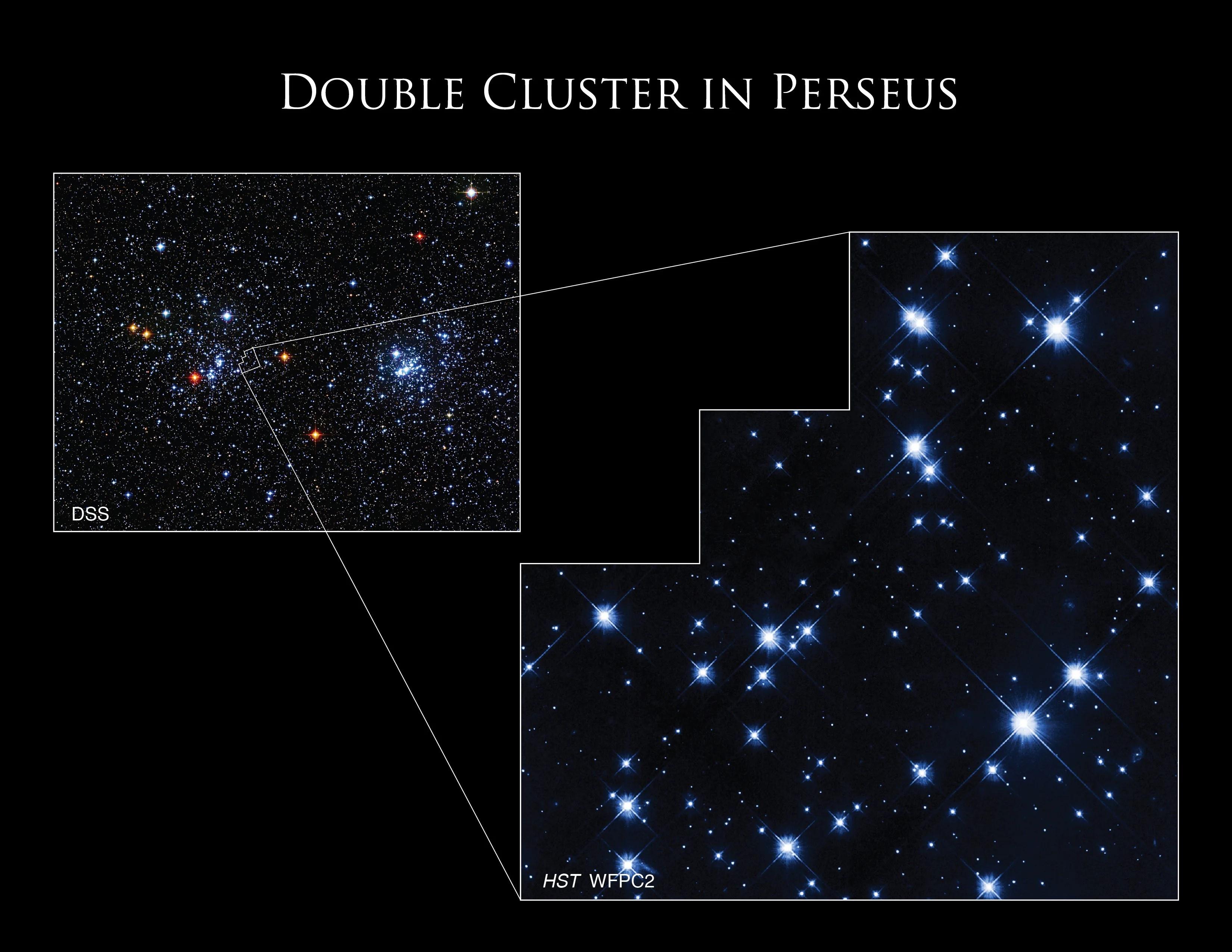
Constant Companions: Circumpolar Constellations, Part II
March 2024 :
As the seasons shift from Winter to Spring, heralding in the promise of warmer weather here in the northern hemisphere, our circumpolar constellations remain the same. Depending on your latitude, you will be able to see up to nine circumpolar constellations. This month, we’ll focus on: Lynx, Camelopardalis, and Perseus. The objects within these constellations can all be spotted with a pair of binoculars or a small to medium-sized telescope, depending on your Bortle scale – the darkness of your night skies.

In the appearance of left to right: constellations Perseus, Camelopardalis, and Lynx in the night sky. Also featured: Cassiopeia as a guide constellation, and Capella as a guide star. Credit: Stellarium Web
Double Stars: The area that comprises the constellation Lynx is famous for its multiple star systems, all of which can be separated with a telescope under dark skies. Some of the notable stars in Lynx are the following:
• 12 Lyncis – a triple star that can be resolved with a medium-sized telescope.
• 10 Ursae Majoris – a double star that was once a part of Ursa Major.
• 38 Lyncis – a double star that is described as blue-white and lilac.
Kemble’s Cascade: This asterism located in Camelopardalis, has over 20 stars, ranging in visible magnitude (brightness) and temperature. The stars give the appearance of flowing in a straight line leading to the Jolly Roger Cluster (NGC 1502). On the opposite side of this constellation, you find the asterism Kemble’s Kite. All three objects can be spotted with a pair of binoculars or a telescope and require moderate dark skies.

A ground-based image from the Digitized Sky Survey (DSS) in the upper left shows Caldwell 14, the Double Cluster in Perseus, with an outline of the region imaged by Hubble’s Wide Field and Planetary Camera 2 (WFPC2). Ground-based image: Digitized Sky Survey (DSS); Hubble image: NASA, ESA, and S. Casertano (Space Telescope Science Institute); Processing: Gladys Kober (NASA/Catholic University of America)
Double Cluster: The constellation Perseus contains the beautiful Double Cluster, two open star clusters (NGC 869 and 884) approximately 7,500 light-years from Earth. This object can be spotted with a small telescope or binoculars and is photographed by amateur and professional photographers alike. It can even be seen with the naked eye in very dark skies. Also in Perseus lies Algol, the Demon Star. Algol is a triple-star system that contains an eclipsing binary, meaning two of its three stars constantly orbit each other. Because of this orbit, you can watch the brightness dim every two days, 20 hours, 49 minutes – for 10-hour periods at a time. For a visual representation of this, revisit NASA’s What’s Up: November 2019.
From constellations you can see all year to a once in a lifetime event! Up next, find out how you can partner with NASA volunteers for the April 8, 2024, total solar eclipse with our upcoming mid-month article on the Night Sky Network page through NASA's website!
This article is distributed by NASA’s Night Sky Network (NSN). The NSN program supports astronomy clubs across the USA dedicated to astronomy outreach. Visit nightsky.jpl.nasa.gov to find local clubs, events, and more!



